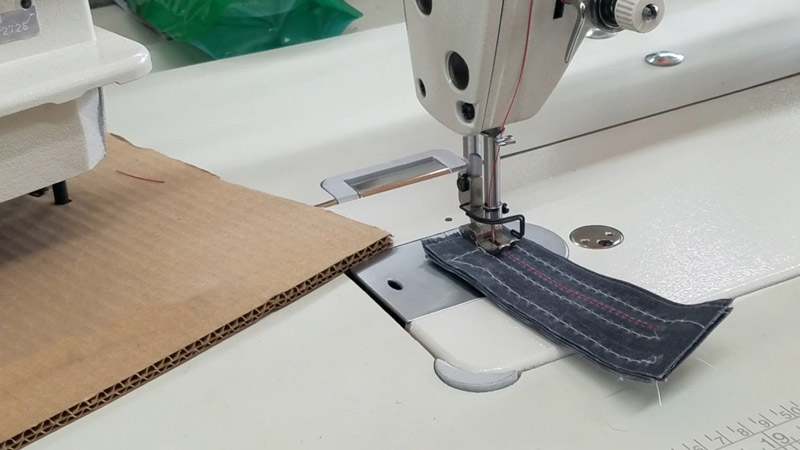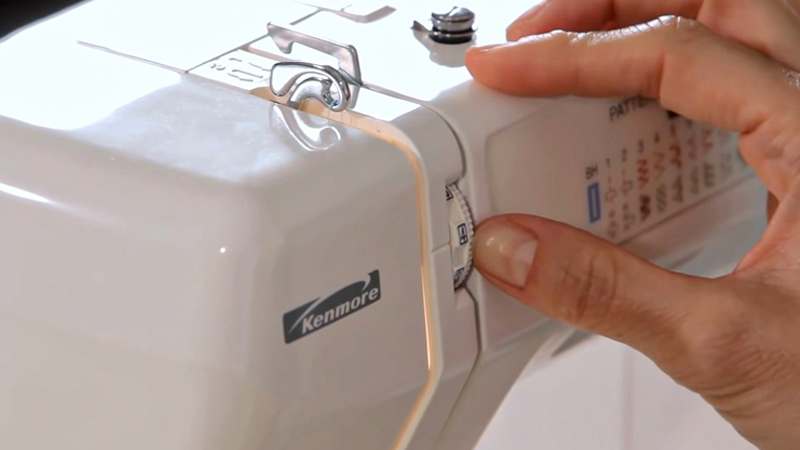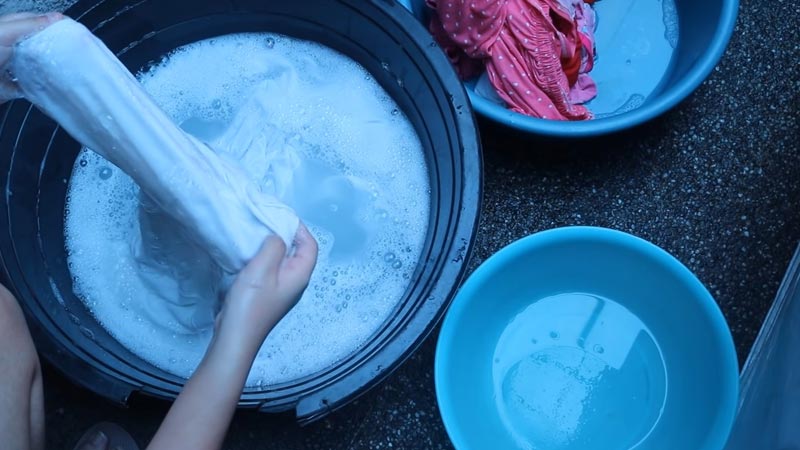Sewing with waxed fabric can be a rewarding experience, adding durability and water resistance to your projects. However, the question of whether it ruins your sewing machine is a common concern.
So, does sewing waxed fabric ruin your machine? Waxed fabrics, often used in crafting outdoor gear or accessories, possess a unique set of challenges for sewing machines.
The wax coating can create additional friction, potentially affecting the machine’s performance over time.
Constant exposure to wax may lead to residue buildup, affecting the machine’s functionality. It’s crucial to consider the type of machine you’re using, as heavy-duty machines may handle waxed fabrics more effectively.
Implementing proper maintenance practices, such as regular cleaning and using the appropriate needles, can help mitigate potential issues.
Understanding the impact of sewing waxed fabric on your machine ensures a smoother sewing process and extends the lifespan of your equipment.

Does Sewing Waxed Fabric Ruin Your Machine?
Sewing with waxed canvas or fabric can be a rewarding but challenging experience. The wax coating adds durability and water resistance to the fabric, making it ideal for various projects.
However, it’s essential to be aware of potential issues that may arise when working with this material, including the impact on your sewing machine and sewing machine jam. So,
Understanding Waxed Fabric
Waxed fabric, often used in outdoor gear and accessories, has a coating of wax or a wax-like substance applied to the surface.
This coating enhances the fabric’s water-resistant properties, making it suitable for items like jackets, bags, and camping gear. Common types of waxed fabric include waxed canvas and oilcloth.
Impact on Needles
One of the primary concerns when sewing with waxed fabric is the impact on needles. The waxed coating can be abrasive, causing increased friction as the needle passes through the material.
This can lead to faster needle wear and potential breakage. It’s advisable to use heavy-duty or specialized needles designed for sewing through tough materials.
Thread Considerations
Choosing the right thread is crucial when working with waxed fabric. The waxed coating can leave residues on the thread, affecting its performance and lifespan.
Opt for high-quality, durable threads that can withstand the challenges posed by the waxed surface. Additionally, consider using polyester or nylon threads for increased strength.
Machine Maintenance
Regular maintenance is key to ensuring your sewing machine remains in good condition when sewing waxed fabric. Clean the machine thoroughly after each project to remove any wax residues that may accumulate.
Pay special attention to the bobbin area and the feed dogs, as the wax build-up in these areas can hinder the machine’s smooth operation.
Tension Adjustments

Sewing with waxed fabric may require adjustments to the machine’s tension settings. The added thickness and resistance of the waxed coating can affect stitch formation.
Experiment with different tension settings to achieve the desired stitch quality. Test on a scrap piece of waxed fabric before starting your actual project.
Needle Position and Speed
Consider slowing down the sewing machine’s speed when sewing waxed canvas. This allows the needle to penetrate the material more effectively without putting excessive strain on the machine.
Additionally, adjusting the needle position can help achieve better results, especially when dealing with multiple layers of waxed fabric.
Choosing the Right Machine
If you frequently work with waxed fabric, investing in a heavy-duty sewing machine designed for thick and tough materials may be beneficial.
These machines often come equipped with stronger motors and specialized features to handle challenging fabrics, reducing the risk of damage over time.
Preventing Build-up in the Feed Dogs
Waxed fabric can contribute to build-up in the feed dogs, affecting the material’s smooth movement through the machine.
Regularly clean the feed dogs and surrounding areas to prevent any accumulation of wax residues. A clean machine ensures optimal performance and longevity.
How to Wash Waxed Cotton Fabric?
Waxed cotton fabric is known for its water-resistant and durable properties, making it a popular choice for outdoor apparel, bags, and accessories. Proper care is essential to maintain its functionality and appearance.
Here’s a comprehensive guide on how to wash waxed cotton fabric.
Understanding Waxed Cotton
Before diving into the washing process, it’s crucial to understand the nature of waxed cotton. While waxing cotton fabric, a protective coat is applied. The wax coating provides water repellency and a unique aesthetic.
Over time, this coating can wear off, so washing should be approached with care to preserve the fabric’s qualities.
Hand Washing

When hand washing waxed cotton, fill a basin with lukewarm water and add a small amount of mild detergent specifically designed for delicate fabrics. Submerge the item and gently agitate the water to loosen the dirt.
Avoid excessive rubbing, as it can wear down the wax coating. Rinse thoroughly with cold water to remove soap residue.
Spot Cleaning
For minor stains or dirt, spot cleaning is often sufficient. Use a soft brush or damp cloth to gently wipe away the dirt. Avoid using harsh chemicals or abrasive brushes that can damage the waxed surface. If the stain persists, move on to a more thorough cleaning method.
Machine Washing
While machine washing is generally not recommended for waxed cotton, certain situations may necessitate it.
Use a front-loading machine on a gentle cycle with cold water. Turn the garment inside out to minimize abrasion on the waxed surface.
Avoid using regular laundry detergents, as they can strip away the wax. Instead, opt for a specialized cleaner for waxed cotton or a gentle, non-detergent soap.
Drying
After washing, it’s crucial to air-dry waxed cotton items. Hanging them on a line or laying them flat on a clean surface is preferable to using a machine dryer.
High heat can melt the wax and compromise the fabric’s water-resistant properties. Allow the item to dry completely before storing or wearing it again.
Reproofing
Over time, the wax coating on cotton fabric may wear off, especially in high-friction areas. Reproofing is the process of reapplying wax to restore water repellency. Various wax products designed for this purpose are available.
Follow the product instructions, ensuring even application. Use a hairdryer or heat gun on a low setting to help the wax penetrate the fabric evenly.
Stain Removal
For stubborn stains, a mixture of mild soap and water can be applied directly to the affected area. Gently rub the stain with a soft cloth or sponge.
Avoid aggressive scrubbing, as it can damage the fabric. Rinse thoroughly and air dry. If the stain persists, consider professional cleaning services.
Storage Tips
Proper storage is crucial for preserving the condition of waxed cotton items. Store them in a cool, dry place away from direct sunlight. Avoid folding or hanging items for extended periods, as this can cause creases and distort the wax coating.
Use padded hangers for jackets and ensure bags are stuffed to maintain their shape.
Special Considerations for Accessories
When washing waxed cotton accessories like bags, remove any detachable straps or hardware before cleaning. Clean straps separately following the manufacturer’s recommendations. Ensure that the bag is completely dry before reattaching straps or using the item.
Caring for waxed cotton fabric requires a delicate touch to maintain its unique properties.
Can You Use Waxed Thread in a Sewing Machine?

Waxed thread is coated with a thin layer of wax, which provides additional strength and durability to the thread. This waxed coating can create issues when used in a sewing machine. Here are some key points to consider:
Machine Compatibility
Not all sewing machines are designed to handle waxed thread. Traditional household sewing machines may struggle with the added thickness and stickiness of the wax. Heavy-duty or industrial machines are better equipped to handle such threads.
Tension Adjustments
The wax coating on the thread can affect the tension settings on your sewing machine. Adjustments may be necessary to prevent the thread from breaking or causing uneven stitching.
Experimenting with the tension settings on scrap fabric before starting your actual project is advisable.
Needle Choice
Waxed thread is thicker than regular sewing thread, so choosing an appropriate needle is crucial. A larger needle with a bigger eye can accommodate the thickness of the waxed thread. Needles designed for heavy fabrics or leather are often suitable for this purpose.
Thread Delivery
The waxed coating can create additional friction as the thread moves through the machine. Ensuring smooth thread delivery is essential to prevent tension issues and minimize the risk of thread breakage.
So, if you’re wondering why is my sewing machine jamming after using waxed thread, it’s probably due to improper thread delivery.
Machine Maintenance
Sewing machines using waxed thread may require more frequent maintenance. The wax residue can accumulate in the machine’s components over time, affecting its performance.
Regular cleaning and oiling of the machine become even more critical when working with waxed thread.
Stitch Quality
Waxed thread can influence the appearance of stitches. While it can create a unique and attractive finish, the wax may also darken the thread color. Testing on scrap fabric allows you to assess the stitch quality and make necessary adjustments.
FAQs
Wax Canvas Before or After Sewing?
It is generally recommended to wax the canvas after sewing. Waxing the fabric after sewing allows you to cover the seams and stitches, ensuring a more even and consistent application of the wax.
Can You Iron Waxed Cotton?
Ironing waxed cotton is not advisable. The heat from an iron can melt or alter the wax coating, potentially causing uneven distribution and compromising the fabric’s water-resistant properties.
Can You Iron Waxed Canvas?
Similar to waxed cotton, it’s not recommended to iron waxed canvas directly. The heat can affect the wax coating, leading to changes in appearance and functionality.
Instead of ironing, you can use a hairdryer on low heat to help redistribute the wax for a more even finish if needed.
Can I Use Any Sewing Machine with Waxed Fabric?
Not all sewing machines are equally suitable for working with waxed fabric. It’s recommended to use a heavy-duty or industrial sewing machine that can handle the thickness and stickiness of waxed fabric.
Do I Need a Special Needle for Waxed Fabric?
Yes, choosing the right needle is crucial when sewing with waxed fabric. Waxed fabric is thicker than regular fabric, so opt for a needle designed for heavy fabrics or leather.
A larger needle with a bigger eye helps accommodate the thickness of the waxed fabric and ensures smooth stitching.
Conclusion
Sewing with waxed fabric presents both challenges and benefits. While it can enhance the durability and water-resistant qualities of your projects, there’s a potential downside to your sewing machine.
The unique properties of waxed fabric, including increased friction and residue buildup, may affect the machine’s performance over time. However, with thoughtful consideration and proper maintenance, these challenges can be minimized.
Choosing the right type of sewing machine, employing appropriate needles, and incorporating regular cleaning routines are essential steps in preserving your machine’s longevity.
Ultimately, the key lies in striking a balance between the advantages of working with waxed fabric and safeguarding your sewing equipment.
By understanding the potential impact and taking proactive measures, you can enjoy the benefits of this specialized material without compromising the functionality of your sewing machine.
In essence, threading the needle between the advantages of waxed fabric and machine care ensures a harmonious crafting experience.
Leave a Reply